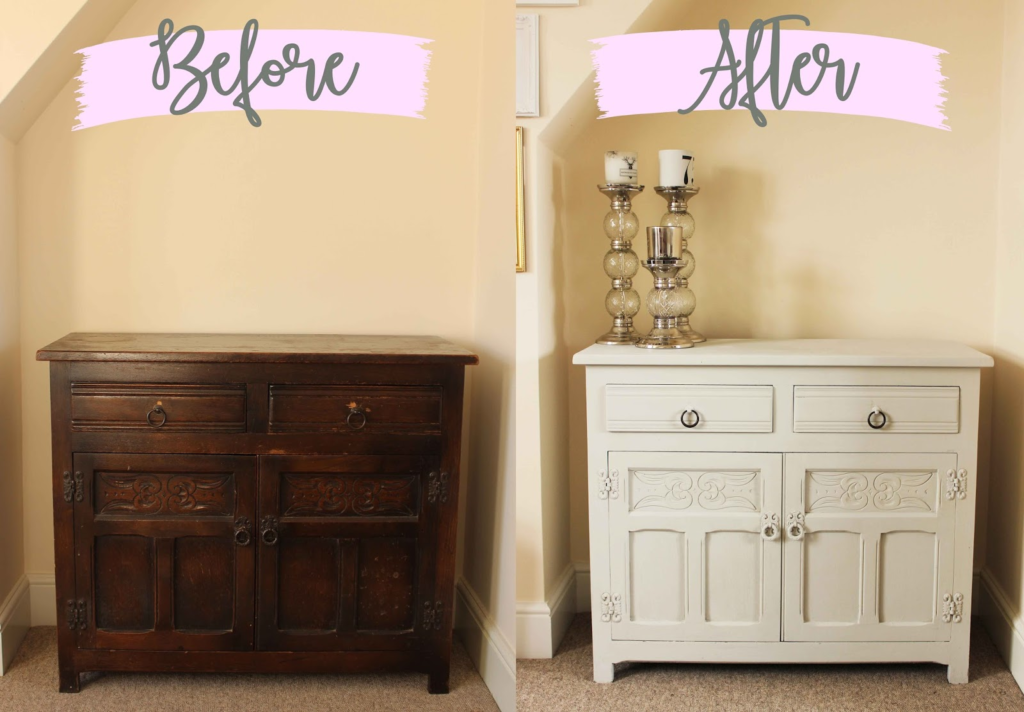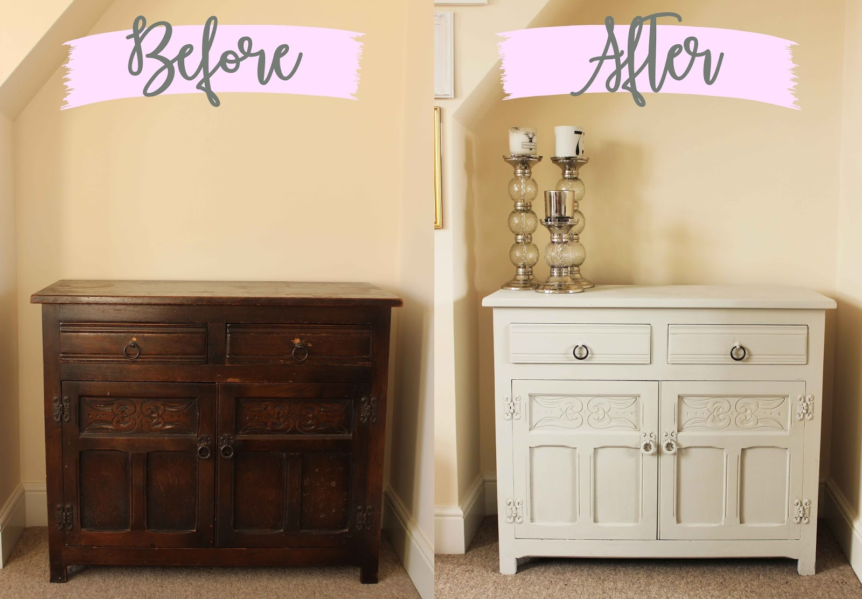Give Your Dated Dark Wood Furniture New Life With These Upcycling Makeover Tips

Dark wood furniture can add a sense of refined elegance and luxury to any home décor scheme. The rich, warm hues of woods like mahogany, walnut, teak, and oak have an inherent beauty that makes them timeless choices for quality furniture.
But as trends and tastes change over the years, those once-beloved dark wood pieces that looked so stylish in your home can start to seem dated or drab when your aesthetic evolves towards lighter and brighter spaces.
So what’s the best way to give dark wood furniture new life for a more modern look?
There are several effective techniques to transform the style of dark wood pieces, from painting or staining to replacing hardware or altering design elements. The process can breathe new life into old furniture while retaining its quality construction.
This guide will explore some of the most popular ways to upcycle dark wood furniture. From learning how to properly prepare the wood surface to painting, bleaching, liming, or applying new stains and finishes, you’ll discover multiple options for customizing the look of any dark wood piece.
Assess the Original Piece
Before beginning an upcycling project, it’s important to fully evaluate the existing dark wood furniture. Examine it closely for any repairs needed, check the construction quality, and identify design elements you may want to enhance or alter during the process.
Consider refinishing the original wood if it is high quality and you simply want a lighter tone. For cheaper pieces or furniture with dated styling, painting or staining may be better options to completely transform the look.
It’s also helpful to think about how the upcycled piece will be used – whether it needs to be highly durable for frequent use or more decorative as an accent furniture item. This can inform which upcycling techniques will work best.
Clean and Prepare the Surface
Once you’ve assessed the original furniture, proper cleaning and surface preparation are key first steps. This gives you a blank slate for the new finish or paint to properly adhere.
Clear off all hardware, knobs, or handles. Use mild soap and warm water to remove any dirt, grease, or grime. For deeper cleaning, try a degreasing agent.
Sand the entire surface lightly with fine 120-150 grit sandpaper to rough it up and remove any glossy sealant.
Finish prepping with a tack cloth to remove dust before applying primer or new finish.
Related articles:
- 10 Best Places To Buy Old Furniture To Upcycle
- 10 Best Selling Upcycled Furniture Items 2023
- 20 Upcycled Outdoor Furniture Ideas
- Best Sandpaper To Use For Upcycling Vintage Wood Furniture
Painting Dark Wood Furniture
One of the most dramatic ways to transform dark wood is with a fresh coat of paint. This works especially well for outdated oak pieces from the 80s or 90s with ornate carved details. The downside is that paint obscures the natural wood grain.
Use a high-quality primer suited for wood before painting. Oil-based primers provide excellent adhesion and blocking stains, optimal for covering darker woods. Standard latex primers work for lighter woods. Apply two coats of primer, sanding lightly between each.
For the paint, options like chalk paint, milk paint, or standard latex work well. Use at least two to three coats for full coverage and durability. Consider a clear finish over paint for added protection.
Distressed, crackled, or layered paint techniques add extra interest. Contrasting colors on base layers peeking through look great on edges or rougher surface areas.
Staining and New Finishes
For high-quality wood furniture with beautiful grain, consider applying a lighter stain or clear finish rather than painting over it. This maintains the natural pattern and texture of the wood.
Bleaching is an easy stain-lifting process using chemical solutions or oxalic acid to fully remove existing stains and lighten tone. Refinishing with a natural oil or light stain after bleaching allows the grain to show through.
Liming wax infuses white pigment into the grain, leaving distress marks while softening the color. It allows wood texture to remain visible. Multiple coats deepen the white tint.
Sand down the existing finish to expose raw wood. Apply oil-based wood conditioner before staining for even penetration and tone. Gel stains provide extra coloring control. Finish with a few coats of water-based polyurethane for protection.
Replacing Hardware
Something as simple as switching out hardware like knobs, pulls, and handles can give dark wood furniture a more modern or eclectic look.
Swap ornately carved handles for sleek stainless steel bar pulls on dressers. Pick knobs with interesting shapes or colors to make cabinets and drawers feel more contemporary.
Backup plates behind handles can add visual interest – try unexpected pops of color or varied shapes. Contrast against wood tone creates a dynamic mixed media style.
Related articles:
- 21 Industrial Upcycled Furniture Ideas
- What Paint Is Best For Upcycling Wood Furniture?
- Best Spray Paint For Upcycling Furniture
Altering Design Elements
Look for small design details on dark wood furniture that you can alter to completely change the overall style. This saves time versus fully refinishing or repainting the entire piece.
Replace ornate wooden feet with sleek metal hairpin legs. This instantly modernizes benches, beds, sideboards, and tables.
Add trim or edge banding in a different color wood as an accent. Iron-on veneer strips come in many wood types and are simple to apply.
Cut out back panels on open bookshelves or cabinets and replace with painted plywood or new material like rattan or metal mesh.
Switch plain cabinet fronts with new shaker-style doors. Install windows into cabinet sides or doors for a cute cottage look.
Protect and Maintain the Finish
Once your upcycling is complete, keep the refreshed furniture looking its best with proper care and maintenance.
Use coasters under hot drinks and waterproof mats under vases to prevent moisture damage. Dust regularly and clean with gentle cleaners only when needed.
Reapply protective sealants like polyurethane or paint finishes annually. Repair nicks right away. Refinish or touch up paint whenever it shows signs of wear.
With the right upcycling approach, you can give tired dark wood furniture new life. Transform an old oak dresser with lime wax or add whimsical paint to a dated mahogany sideboard. Adjust design details for a completely custom piece. Fresh stain or paint paired with replaced hardware will make well-built furniture shine again. Get creative with your dark wood pieces and enjoy them for years to come!
Related Questions
How to Make Dark Wood Furniture Look Modern
There are several effective ways to give dark wood furniture a fresh, contemporary look without completely changing the color of the wood itself.
- Replace any ornate turned legs, bun feet, or curved cabriole legs with sleek metal hairpin legs. Opt for finishes like brushed brass, matte black, or chrome for a more modern look. This leg swap is one of the fastest ways to instantly modernize the entire silhouette and profile of a dark wood piece.
- If the furniture has elaborate carved detailing, trim or molding, consider carefully removing it to achieve a super smooth and minimalist shape. Use wood filler to smooth over any holes or imperfections left behind. The clean lines will feel more modern.
- For cabinets or dressers with intricate vintage pulls or knobs, swap these out for simple modern hardware instead. Look for handles and knobs in matte black, nickel, chrome, or glass for an updated style. Avoid anything too shiny.
- If the existing wood has a high-gloss finish, sand it down to a much subtler satin sheen instead. Super glossy and shiny surfaces tend to look quite dated. A move matte finish allows the beautiful natural woodgrain to show through.
- Adding contrasting trim or banding along edges and sides is a great way to modernize the look. Iron-on veneer strips in a light wood like white oak or ash paired with walnut or darker mahogany adds clean delineated lines for a contemporary edge.
- On open bookcases or cabinets, remove the backs to create more of an airy, floating shelving look. Replace with frames of modern materials like black iron, painted MDF, or frosted glass. This instantly slims and modernizes bulky solid wood cases.
The key is targeting small design details that can help transform the overall aesthetic to feel fresh and current while still letting the innate beauty of the dark wood itself shine through. Honor the original high-quality wood by keeping true grain patterns and color visible in ways that complement a more minimalist modern style.
How to Lighten Dark Furniture Without Paint
For high-quality solid wood furniture where you want to preserve the natural woodgrain pattern, there are several effective ways to gently lighten the tone without obscuring it under opaque painted finishes:
- One of the most reliable ways is using chemical solutions or oxalic acid to fully remove existing stain or finish and bleach out color pigment from the grain. This process draws out the darker pigment while leaving the overall texture and grain itself intact. After bleaching, apply a new clear oil or light stain to protect the wood while revealing its natural lighter tone.
- Limings wax can also be highly effective for lightening the shade of darker woods like walnut, mahogany or cherry. The process infuses white pigment into the grain itself, leaving behind distress marks in crevices and along edges to maintain character. Multiple coats gradually lighten the tone more without totally obscuring the wood pattern beneath.
- For an eco-friendly whitewashing effect, make a solution from lime powder or cream cleaner and water. Apply it over raw wood using a brush and cloth to work it into the grain. This adds a rustic matte white tint while allowing the texture to still show through. It’s more opaque than liming but still allows some grain to peek through.
- Use penetrating oils that soak into the woodgrain and provide only a sheer protective tint. Tung oil or boiled linseed oil work well. Apply them over sanded raw wood to reduce any orange or red undertones for a more even, natural tone. The oils gently even the color while allowing the depth of the grain to remain visible.
- Sand down existing finish to expose the raw wood beneath. Then condition with an oil-based pre-stain before applying a lighter gel stain. The gel stains allow for more coloring control than liquid stains. Multiple sheer coats gradually lighten the wood while showing the texture.
All of these methods remove or minimize the existing darker pigment in wood like oak, walnut and mahogany while gently lightening the tone and preserving the beauty of real wood grain.
Conclusion
There are many great options for DIYers looking to upcycle dark wood furniture with a fresh modern look. Assessing the existing piece and properly preparing the surface are key first steps before moving on to paint, bleach, stain, refinish or otherwise customize the appearance. Even small tweaks like switching out hardware or altering minor design details can go a long way in updating the aesthetic.
With some creativity and the right combination of materials, techniques and personalized touches, you can transform the style of a dated oak dresser, dingy mahogany cabinet or any worn dark wood furniture you have.
Give an antique sideboard new appeal with a trendy painted finish, or modernize a flea market find with sleek hairpin legs. Bleach out the existing stain on a vintage farmhouse table to brighten up its look. Swap ornate pulls for minimal brass knobs to streamline a classic credenza.
The options are endless when upcycling dark wood furniture. Bringing out the timeless beauty of the grain while tailoring the overall design to your current style preferences results in one-of-a-kind wood pieces that feel completely fresh, contemporary and full of character. With the right approach and some creative vision, you can give overlooked dark wood furniture the modern makeover it deserves.


